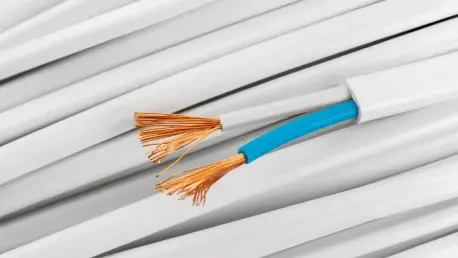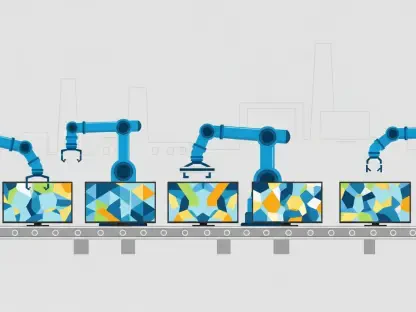In a startling turn of events earlier this year, the digital world was shaken by the severing of two crucial undersea internet cables—SMW4 and IMEWE—in the Red Sea corridor near Jeddah, Saudi Arabia, leaving millions across countries like India, Pakistan, and the UAE grappling with degraded internet access. This disruption has exposed a glaring weakness in the infrastructure that underpins global connectivity, serving as a stark reminder of how fragile the digital backbone of modern society truly is. Far from being a mere technical hiccup, it raises pressing questions about the security of internet infrastructure in an era where connectivity is as vital as electricity. As geopolitical tensions simmer and the risks of sabotage loom large, the need to safeguard these critical arteries of communication has never been more urgent. This event compels a closer look at the vulnerabilities, consequences, and potential solutions surrounding the stability of global internet access.
Exposing a Digital Weak Spot
The Red Sea isn’t just a body of water; it’s a linchpin for global communication, channeling an estimated 17% of the world’s internet traffic between Asia, Europe, and Africa. The abrupt severing of major cables like SMW4 and IMEWE in this narrow corridor has laid bare a dangerous dependency on a limited number of undersea pathways. Despite technological advancements, such as SMW4’s capacity increase to 4.6 Tbit/s years ago, many of these cables lack sufficient redundancy to weather unexpected failures. This over-reliance on specific routes creates a brittle system where a single incident can cascade into widespread disruption. The fragility of this setup isn’t just a technical concern—it’s a global risk that affects everything from personal communication to international commerce, highlighting how interconnected and vulnerable the digital ecosystem has become in today’s world.
Beyond the physical limitations, the concentration of internet traffic through such chokepoints amplifies the potential for catastrophic fallout. When critical cables are cut, there are few immediate alternatives to reroute data, leading to significant delays and degraded service for entire regions. This isn’t merely an inconvenience; it disrupts vital sectors like finance, healthcare, and education that depend on seamless connectivity. The incident in the Red Sea serves as a harsh lesson in the perils of centralized infrastructure, where a localized event can have far-reaching consequences. It underscores the urgent need for diversified pathways to ensure that the global internet doesn’t hinge on a handful of vulnerable corridors. Without such measures, the risk of similar disruptions looms large, threatening the stability of digital life as it’s currently known.
The Shadow of Geopolitical Risks
As investigations into the Red Sea cable cuts continue, speculation about deliberate sabotage has gained traction, with fingers pointing toward groups like Yemen’s Houthi rebels, who have a history of causing unrest in the region amid ongoing conflicts. While the exact cause remains unconfirmed, the possibility of intentional damage signals a troubling evolution in modern warfare where digital infrastructure becomes a prime target. This hybrid approach, blending physical destruction with potential cyber threats, transforms undersea cables into strategic pawns in geopolitical chess games. The implications extend far beyond temporary outages, as such acts can destabilize entire economies by severing the digital lifelines that support trade, communication, and security across continents.
The broader impact of weaponizing internet infrastructure is a chilling reminder of how deeply technology is intertwined with global stability. A targeted attack on cables can disrupt supply chains, halt financial transactions, and even hinder emergency responses in affected regions. This incident in the Red Sea illustrates how connectivity, often taken for granted, can be leveraged as a pressure point in conflicts, amplifying the stakes for nations and corporations alike. It also highlights the growing need for international cooperation to protect these shared resources from becoming casualties of regional disputes. As geopolitical tensions continue to simmer, the risk of future disruptions looms, demanding a proactive stance to shield the digital arteries that keep the world connected.
Financial and Operational Fallout for Telecoms
For major telecom operators like Telecom Egypt, Vodafone, and Google, the severing of Red Sea cables has unleashed a cascade of financial and operational challenges that are impossible to ignore. Rerouting internet traffic through alternative pathways often comes with exorbitant costs and results in slower connection speeds, directly impacting service quality for millions of users. Many of these companies find themselves in a precarious position due to a lack of diversified routing options, leaving them vulnerable to both immediate revenue losses and long-term reputational damage. This crisis exposes the harsh reality that banking on a narrow set of undersea cables is a gamble in an increasingly unpredictable global landscape.
The ripple effects of such disruptions extend beyond balance sheets, shaking consumer trust and straining operational capacities. Telecom giants must now grapple with the daunting task of managing customer dissatisfaction while investing in costly contingency plans to prevent future outages. This situation serves as a critical wake-up call for the industry to reassess reliance on vulnerable infrastructure and prioritize resilience over short-term cost savings. The financial burden of rerouting and repairs, coupled with the intangible cost of eroded confidence, paints a sobering picture of the risks embedded in the current system. For these companies, adapting to a new reality where digital security is paramount will be essential to weathering the storms of unforeseen disruptions.
Innovating to Strengthen Connectivity
In the wake of the Red Sea cable cuts, a renewed focus on alternative technologies has emerged as a beacon of hope for bolstering global internet resilience. Satellite internet, spearheaded by initiatives like SpaceX’s Starlink, offers a promising backup for regions battered by outages, even if it cannot yet rival the bandwidth of traditional undersea cables. This technology provides a critical safety net, ensuring that connectivity isn’t entirely lost when primary systems fail. As satellite networks expand, their role in bridging gaps during crises becomes increasingly vital, offering a glimpse into a future where hybrid systems could mitigate the impact of physical infrastructure damage in high-risk areas.
Complementing satellite solutions, advancements in cybersecurity are gaining momentum as indispensable tools to protect against both physical sabotage and digital threats. AI-driven monitoring systems, developed by companies like watchTowr, are being deployed to detect vulnerabilities and preempt attacks on critical infrastructure. These innovations represent a shift toward a more fortified digital landscape, where prevention and rapid response are prioritized. Unlike satellite tech, which addresses access, cybersecurity focuses on safeguarding the integrity of data flows, tackling the dual nature of modern threats. Together, these approaches signal a broader movement to rethink how connectivity is maintained, pushing the boundaries of technology to ensure that global communication remains unbroken even in the face of adversity.
Strategic Responses and Future Investments
Governments and international organizations are stepping up to address the vulnerabilities exposed by the Red Sea incident, with entities like the U.S. FCC and NATO leading efforts to enhance infrastructure security. Policies aimed at excluding high-risk foreign entities from cable projects, alongside protective operations, are gaining traction as essential safeguards. Collaborative initiatives, such as Singapore’s efforts to combat cyber threats through public-private partnerships, exemplify a model for collective defense against disruptions. These strategic moves reflect a growing recognition that digital connectivity is a matter of national and global security, requiring coordinated action to protect shared resources from escalating threats.
For investors, this crisis serves as a pivotal moment to recalibrate priorities and focus on sectors poised for resilience. Companies investing in redundant infrastructure, satellite technology, and cutting-edge cybersecurity solutions present attractive opportunities to mitigate risks tied to regional instability. The projected growth of the AI cybersecurity market, expected to surge significantly from current levels over the next few years, underscores a lucrative avenue for capital allocation. This shift in investment perspective emphasizes the importance of balancing exposure to vulnerable systems with stakes in innovative, adaptive technologies. As the landscape evolves, aligning resources with firms that prioritize robust, diversified networks will be crucial to navigating the uncertainties of an interconnected yet fragile digital world.
Building a More Resilient Digital Tomorrow
Reflecting on the Red Sea cable cuts, it’s evident that the incident marked a turning point in how the world perceives the security of its internet infrastructure. The disruption affected millions, strained telecom operations, and exposed the perils of dependency on critical chokepoints. Yet, it also spurred action, driving innovation in satellite systems and cybersecurity defenses to counter both physical and digital risks. Governments and organizations responded with policies aimed at fortifying connectivity, while investors began redirecting focus toward resilient solutions. Moving forward, the emphasis must remain on diversifying infrastructure and fostering international collaboration to prevent future crises. Strengthening public-private partnerships and accelerating the adoption of hybrid connectivity models will be key steps in ensuring that the digital lifelines of tomorrow are more robust and less susceptible to disruption.









